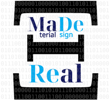Xiao Yuanyuan; Kong Xiangfei; Yao B. N.; Legut Dominik; Germann Timothy; Zhang Ruifang. Atomistic insight into the dislocation nucleation at crystalline/crystalline and crystalline/amorphous interfaces without full symmetry. Acta Materialia. 2019, vol. 162, s. 255-267. ISSN 1359-6454, eISSN 1873-2453, DOI: http://doi.org/10.1016/j.actamat.2018.09.068.
The Article published in Acta Materialia 2019, vol. 162, p. 255-267 is a comprehensive study of the current status of knowledge of the dislocation emission process from large lattice mismatched crystalline/crystalline interfaces and crystalline/amorphous interfaces without local symmetry, where the nonSchmid dislocation nucleation at such interfaces under various loadings is also comparatively explored. Misfit dislocations at bimetal interfaces play a decisive role in determining various deformation behaviors by carrying the shear sliding. However, when the interface does not possess the distinct feature of misfit dislocations, the nucleation mechanism of lattice dislocations at the interface were previously unknown. Using crystalline/crystalline interfaces with a large lattice mismatch and crystalline/amorphous interfaces without local symmetry as prototypes, we show for the first time that the dislocation nucleation at such interfaces stems from the localized strain heterogeneities by modifying the volumetric and shear strain components of response to different loading at the atomic level. We also find that in-plane localized shear plays a critical role in the emission of lattice dislocations from interfaces, while the corresponding normal components of the volumetric strain tensor dominate for the nucleated lattice dislocation by modifying the atomic excess volume at the interface to overcome the dislocation nucleation barrier. These results provide a foundation to investigate the effects of strain and chemical heterogeneities, which can provide a realistic explanation of interface-mediated deformation mechanisms and an efficient solution to tune plasticity at the interface.
